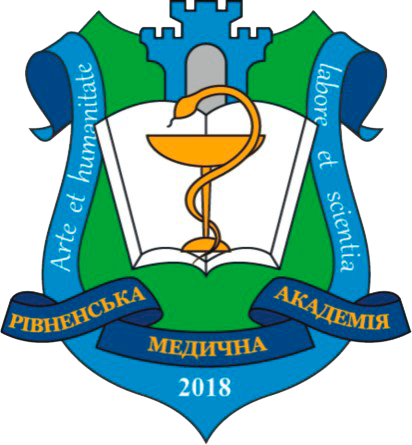THE INFLUENCE OF PHYSICAL THERAPY ON MARKERS OF THE FUNCTIONAL STATE OF THE TEMPOMANDIBULAR JOINT IN PERSONS WITH ITS DYSFUNCTION
DOI:
https://doi.org/10.32782/health-2024.3.20Keywords:
maxillofacial region, rehabilitation, physical therapy in dentistry, temporomandibular joint, temporomandibular joint dysfunctionAbstract
Aim: to determine the corrective effect of the developed physical therapy program on the performance indicators of the maxillofacial area in persons with temporomandibular joint dysfunction. Methods. 100 people were examined. The comparison group consisted of 35 people without burdened dental status. Group 1 consisted of 33 people with temporomandibular joint dysfunction, the symptoms of which were corrected by wearing individually made splints on the lower jaw. Group 2 consisted of 32 people with temporomandibular joint dysfunction, wore individual relaxing splints, and underwent a three-month physical therapy program. It included therapeutic exercises with the OraStretch® Press System, exercises for the face, neck, cervical region, back, breathing exercises, relaxation exercises; massage course; electromyostimulation of the muscles of the maxillofacial region; proprioceptive neuromuscular facilitation of masticatory muscles, neck muscles; kinesiological taping; progressive muscle relaxation according to Jacobson. The result was evaluated by the dynamics of complaints, examination, Helkimo index, “Hamburg test”, Jaw Functional Limitation Scale. Results. During re-examination, the number of complaints and visual manifestations of temporomandibular joint dysfunction decreased in patients of both groups. The overall dynamics of the Helkimo index was 44.81 % in group 1, 68.5 % in group 2 (р<0.05). The total score of the “Hamburg test” decreased in group 1 by 42.1 %, in group 2 by 65.2 % (p<0.05). The total Jaw Functional Limitation Scale score in group 1 improved by 30.8 %, in group 2 by 49.2 % (p<0.05). Taking into account the statistical homogeneity of both groups during the initial examination (no difference was found between them according to the studied markers of the functioning of the maxillofacial area, p>0.05), a statistically significant improvement of the studied indicators relative to the initial parameters was determined (p<0.05), but with the advantage of group 2 (p<0.05). Conclusions. Means of physical therapy improve the effectiveness of dental orthopedic interventions, therefore, it is advisable to use them to increase the effectiveness of correction, reduce the severity of pathological signs, and improve functioning in patients with temporomandibular joint dysfunction.
References
Beaumont S., Garg K., Gokhale A., Heaphy N. Temporomandibular Disorder: a practical guide for dental practitioners in diagnosis and management. Aust Dent J. 2020. № 65(3). Р. 172–180. doi:10.1111/adj.12785
Tran C., Ghahreman K., Huppa C., Gallagher J.E. Management of temporomandibular disorders: a rapid review of systematic reviews and guidelines. Int J Oral Maxillofac Surg. 2022. № 51(9). Р. 1211–1225. doi:10.1016/j.ijom.2021.11.009
Bouloux G.F., Chou J., Di Fabio V., et al. The Contemporary Management of Temporomandibular Joint Intra-Articular Pain and Dysfunction. J Oral Maxillofac Surg. 2024. № 82(6). Р. 623–631. doi:10.1016/j.joms.2024.01.003
Wadhokar O.C., Patil D.S. Current Trends in the Management of Temporomandibular Joint Dysfunction: A Review. Cureus. 2022. Р. 14(9). Р. e29314. doi:10.7759/cureus.29314
Alowaimer H.A., Al Shutwi S.S., Alsaegh M.K., et al. Comparative Efficacy of Non-Invasive Therapies in Temporomandibular Joint Dysfunction: A Systematic Review. Cureus. 2024. № 16(3). Р. e56713. doi:10.7759/cureus.56713
Fernández-de-Las-Peñas C., Von Piekartz H. Clinical Reasoning for the Examination and Physical Therapy Treatment of Temporomandibular Disorders (TMD): A Narrative Literature Review. J Clin Med. 2020. № 9(11). Р. 3686. doi:10.3390/jcm9113686
Аравіцька М.Г., Шеремета Л.М., Данильченко С.І., Довгань О.В. Ефективність засобів фізичної терапії у корекції функціонального статусу скронево-нижньощелепного суглоба при артрозі. Український журнал медицини, біології та спорту. 2021. № 6 (34). С. 188–193. DOI: 10.26693/jmbs06.06.188
Salloum K., Karkoutly M., Haddad I., Nassar J.A. Effectiveness of Ultrasound Therapy, TheraBite Device, Masticatory Muscle Exercises, and Stabilization Splint for the Treatment of Masticatory Myofascial Pain: A Randomized Controlled Trial. Clin Exp Dent Res. 2024. № 10(4). Р. e921. doi:10.1002/cre2.921
Azam I., Chahal A., Kapoor G., et al. Effects of a program consisting of strain/counterstrain technique, phonophoresis, heat therapy, and stretching in patients with temporomandibular joint dysfunction: A pilot study. Medicine (Baltimore). 2023. № 102(32). Р. e34569. doi:10.1097/MD.0000000000034569
Mota M.M.L, Aguiar I.H.A.E., de Lima A.S., et al. Effectiveness of Laser Acupuncture for Reducing Pain and Increasing Mouth Opening Range in Individuals with Temporomandibular Disorder: A Systematic Review and Network Meta-Analysis. Curr Pain Headache Rep. 2024. № 28(7). Р. 723–742. doi:10.1007/s11916-024-01251-5
Саєнко О.В., Аравіцька М.Г. Динаміка постіммобілізаційних функціональних обмежень орофаціальної зони у пацієнтів після перелому нижньої щелепи під впливом реабілітаційних засобів. Art of Medicine. 2023. № 4(28). С. 115–120. DOI: 10.21802/artm.2023.4.28.115
Саєнко О.В., Аравіцька М.Г. Оцінювання ефективності програми реабілітації хворих із дисфункцією скронево-нижньощелепного суглоба у постіммобілізаційному періоді після переломів нижньої щелепи за показниками кінезіофобії та якості життя. Health & Education. 2023. № 4. С. 220–225. DOI https://doi.org/10.32782/health-2023.4.31
McNeill C. Craniofacial pain--the TMJ management dilemma. CDA J. 1985. 13(3). Р. 34–39.
Ohrbach R, Larsson P, List T. The jaw functional limitation scale: development, reliability, and validity of 8-item and 20-item versions. J Orofac Pain. 2008. № 22(3). Р. 219–230.





